In Finland and other parts of the world, partaking in the passive heat therapy offered by saunas is a way of life. But for most Americans, a shvitz in a sauna is something associated with the leisure and relaxation of spa time. The truth is, there are several studied health benefits of consistent heat therapy sessions, such as reducing the risk of vascular diseases (including cardiovascular disease and hypertension) that make heat therapy more than a feel-good spa practice.
But there’s more than one way to delve into heat therapy. Ahead, we'll unpack the differences (and similarities) between dry air, infrared saunas, and steamy, traditional Finnish saunas, to help you land on the best treatment for you.

Traditional Sauna and Infrared Sauna: What’s the Difference?
You sit in a room and sweat — how different can the heat be room to room? Well, a lot. It turns out, there’s a big difference between traditional saunas, infrared ones, and steam rooms. A traditional Finnish sauna is a wood-lined room equipped with either a wood-burning sauna stove or electric sauna heater used to warm the room to at least 160 to 200 degrees Fahrenheit. Inside, users can sprinkle water atop heated stones as a way of controlling the level of humidity.
In infrared saunas (referred to by some sauna purists as “infrared heat therapy rooms”), infrared wavelengths are generated to primarily heat the body (versus the room). Because infrared heat is thought to penetrate the body more deeply than warmed air, rooms operate at a cooler range of 100 to 150 degrees Fahrenheit. Jeff Ono, co-founder of Pause Studio, a company with five locations in greater Los Angeles and plans to expand to Florida, Georgia, Atlanta, Tennessee, and Arkansas, explains more.
“An infrared sauna heats your body at a cellular level, unlike a traditional sauna, which [primarily] heats the air around you,” he says. “Because it penetrates the skin directly through infrared wavelengths, the environment doesn’t need to be as hot to effectively increase the body’s core temperature.”
Sometimes confused for a sauna, a steam room (sometimes called a “steam sauna”) is typically a tile-lined environment in which steam is fed (from an exterior generator) as a means of creating a high-humidity, steamy environment. Steam rooms are commonly heated to a range of 110 to 120 degrees Fahrenheit and kept at a humidity level of 90% to 100%.
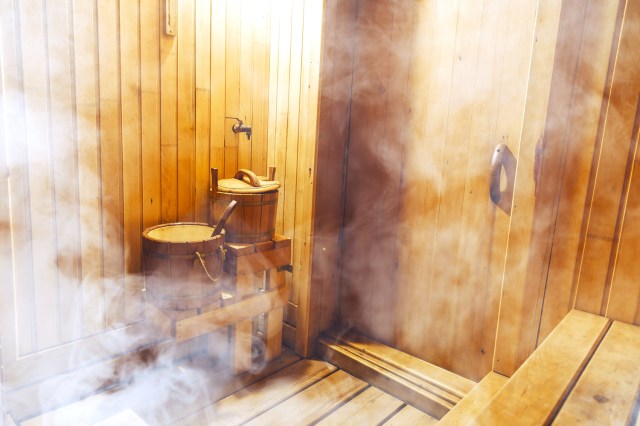
Health Benefits of Traditional Saunas
The health benefits of Finnish saunas are well documented, with a comprehensive review of passive heat therapy benefits published in 2024 by researchers affiliated with Finland’s Department of Medicine, the Institute of Clinical Medicine, the University of Eastern Finland, and the U.K.-based Diabetes Research Centre stating, “Finnish saunas have the most consistent and robust evidence regarding health benefits.”
This research attributes Finnish sauna therapy to decreasing the risk of health outcomes such as hypertension, cardiovascular disease, thromboembolism, dementia, and respiratory conditions. The review also states that “the therapy may improve the severity of musculoskeletal disorders, COVID-19, headache, and flu, while also improving mental well-being, sleep, and longevity.”
An additional academic review of published evidence regarding sauna bathing that appeared in the August 2018 issue of Mayo Clinic Proceedings also links the practice to improved heart and brain health. What’s more, a number of studies have tied post-workout sauna sessions to reduced inflammation in the body and enhanced endurance, among other benefits, though such studies have been small and conducted primarily with male subjects. Reinforcing some of these positive outcomes among a female cohort, a 2022 study (featuring primarily female subjects) published in the American Journal of Physiology connected post-exercise Finnish sauna sessions with improvements in cardiorespiratory fitness, lower systolic blood pressure (the pressure caused by your heart contracting and pushing out blood), and lower cholesterol.
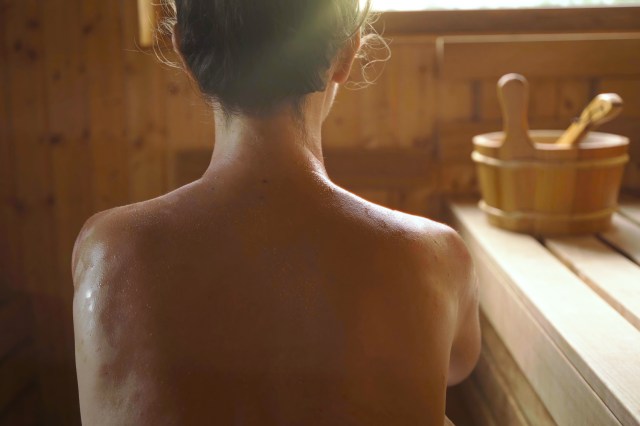
Risks Associated With Traditional Saunas
Research has shown risks associated with traditional Finnish sauna bathing to be relatively low. Traditional Finnish sauna bathing has been shown in studies to be generally safe for healthy adults (including those who are pregnant) and children, though those who have recently suffered a heart attack, experienced unstable angina pectoris (a type of chest pain), or severe aortic stenosis (a failure of the heart valve) should sit out the heat therapy sessions.
Considering Americans’ correlation of saunas to spa time, it may be tempting to sauna during a boozy celebration. But it's best to skip that complimentary glass of champagne: Research indicates that “alcohol consumption during sauna bathing increases the risk of hypotension, arrhythmia, and sudden death, and should be avoided.” Ultimately, Scott Räisänen, president of the North American Sauna Society, offers the most sage advice when considering health risks or benefits of traditional sauna bathing, saying, “Users should consult their physician if there are concerns before using any type of heat therapy method.”
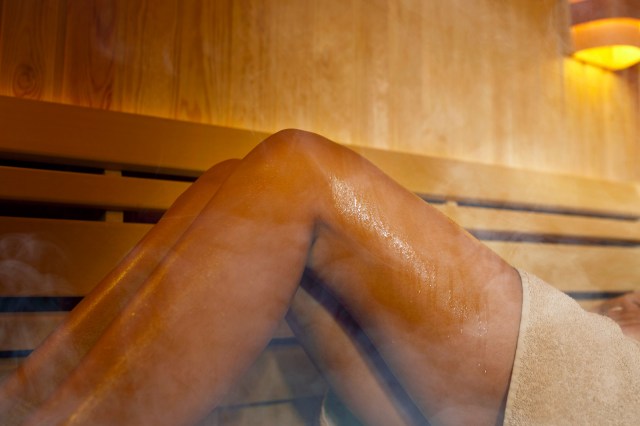
Health Benefits of Infrared Saunas
As it's a newer form of heat therapy, the benefits of infrared saunas aren’t as documented as those associated with traditional Finnish saunas. Still, research does tie infrared heat therapy to health benefits: A small study has shown post-exercise infrared sauna sessions improved the recovery of neuromuscular performance and muscle soreness in male basketball players who had just completed a resistance training workout. A 2009 scientific review of literature regarding the health benefits of infrared sauna use in cardiovascular support observed benefits related to pain, stress, and fatigue, as well as common chronic diseases such as hypertension, dyslipidemia, diabetes, and obesity. However, the review also noted that evidence was limited, as the included studies featured small sample sizes and short duration, among other limitations.
The review further concluded that “because infrared heat penetrates more deeply than warmed air, users of infrared saunas develop a more vigorous sweat at a lower temperature than users of traditional saunas.” This takeaway aligns with Ono’s perspective of the therapy: “Infrared heats from the inside out, closely mirroring how our bodies absorb heat from the sun. This benefits the body at a cellular level and reduces the effort required to absorb heated air around you,” he says.
Research has shown that the electromagnetic wave used in infrared saunas can penetrate the tissues when increasing the body’s temperature, therefore promoting muscle relaxation, blood circulation, and activating metabolism. Further, Ono believes infrared heat may provide additional deep-tissue benefits to the heat provided in traditional Finnish sauna therapy. “The ideal infrared sauna time varies per user, but 20 minutes is a great baseline for most. As you use an infrared sauna more regularly, you can extend session lengths up to an hour as you build tolerance to the heat,” he says. “Since infrared saunas raise your core body temperature more effectively, you'll continue sweating and maintaining detoxification benefits even after the session ends.”

Risks Associated With Infrared Saunas
As with traditional Finnish saunas, studies show minimal risk for healthy adults and children in using infrared saunas. For example, in a 2018 review of research on the effects of repeated dry sauna interventions (both infrared and traditional Finnish) on human health, none of the studies reported severe adverse effects that required the need for emergency medical services among subjects. It’s worth noting that Räisänen’s advice, above, applies to infrared sauna use as well: Talk to your doctor before starting any type of heat therapy.
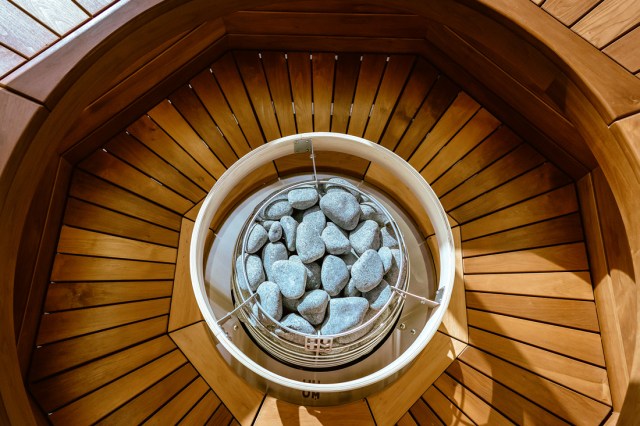
Which Heat Therapy Treatment Is Better for You?
Outside of advice garnered from personal medical providers, choosing between the use of a traditional Finnish sauna and an infrared sauna ultimately comes down to personal preference. Some argue that the use of a traditional Finnish sauna offers the biggest opportunity to customize sessions, as users can control humidity via how much water is applied to rocks (and ultimately how much steam is produced).
“Additionally, a traditional Finnish sauna will most often have tiered benching within the hot room, which will give users the ability to choose how much heat they might be exposed to due to the fact that heat rises,” Räisänen says. “If one user wants to expose themself to higher temperatures, they can sit on the upper bench. If another user wants to expose themself to lower temperatures, they can sit on the lower bench.”
Others (particularly those sensitive to high temperatures and humidity, as Ono points out) may find that infrared waves make for a more comfortable way to enjoy heat therapy, as we now know the infrared heat can penetrate the tissue of the body while a cooler environment is maintained. Additionally, since infrared saunas do not produce the high humidity levels that traditional saunas do, they may be more comfortable for users with respiratory issues, Ono says.
No matter which form of heat therapy you choose, ensure time after each session for a cooling-off period, during which rehydrating by drinking water and spending time in cooler temperatures are encouraged.
This article is for general informational purposes only.
Affiliate Disclaimer Medical Disclaimer



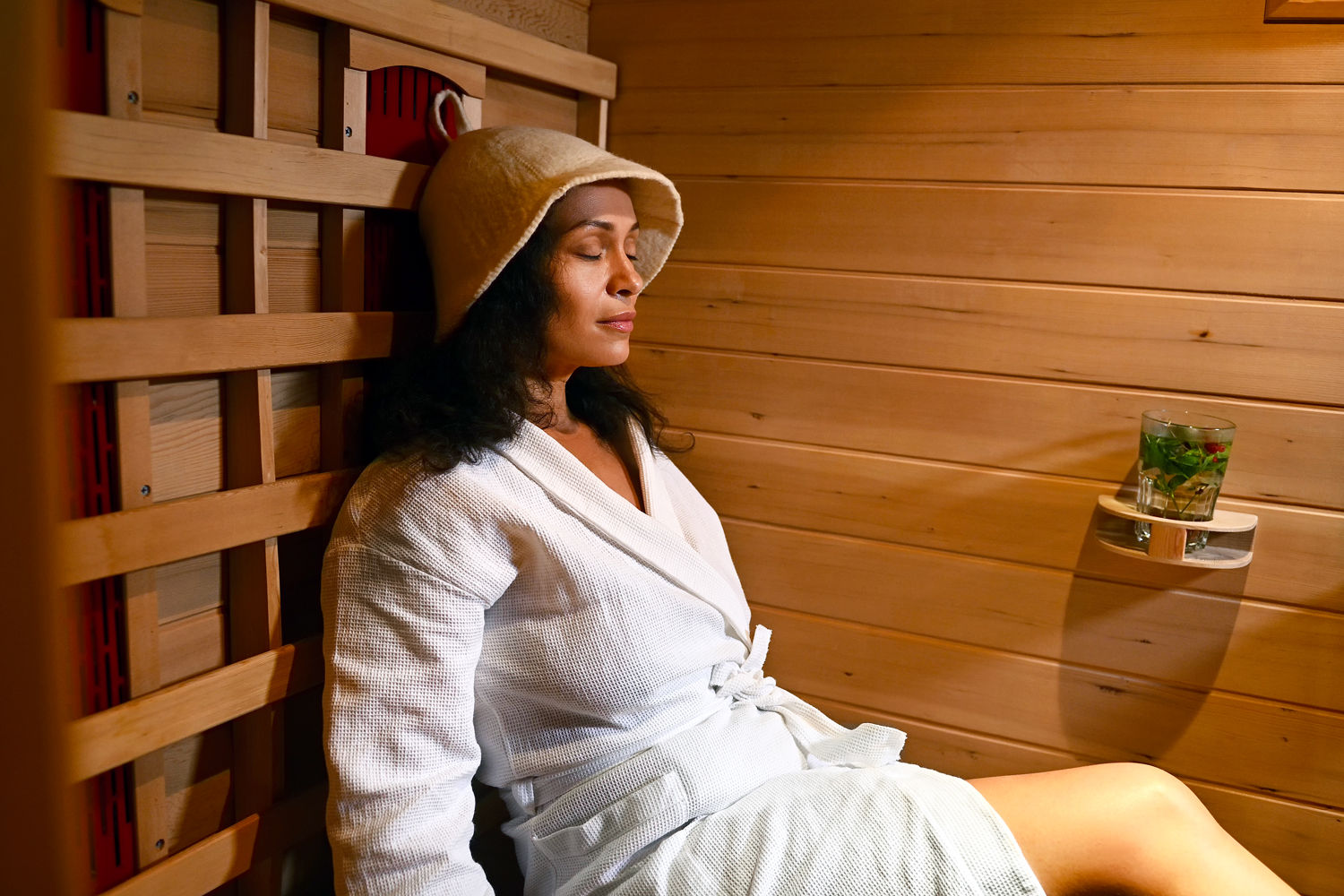



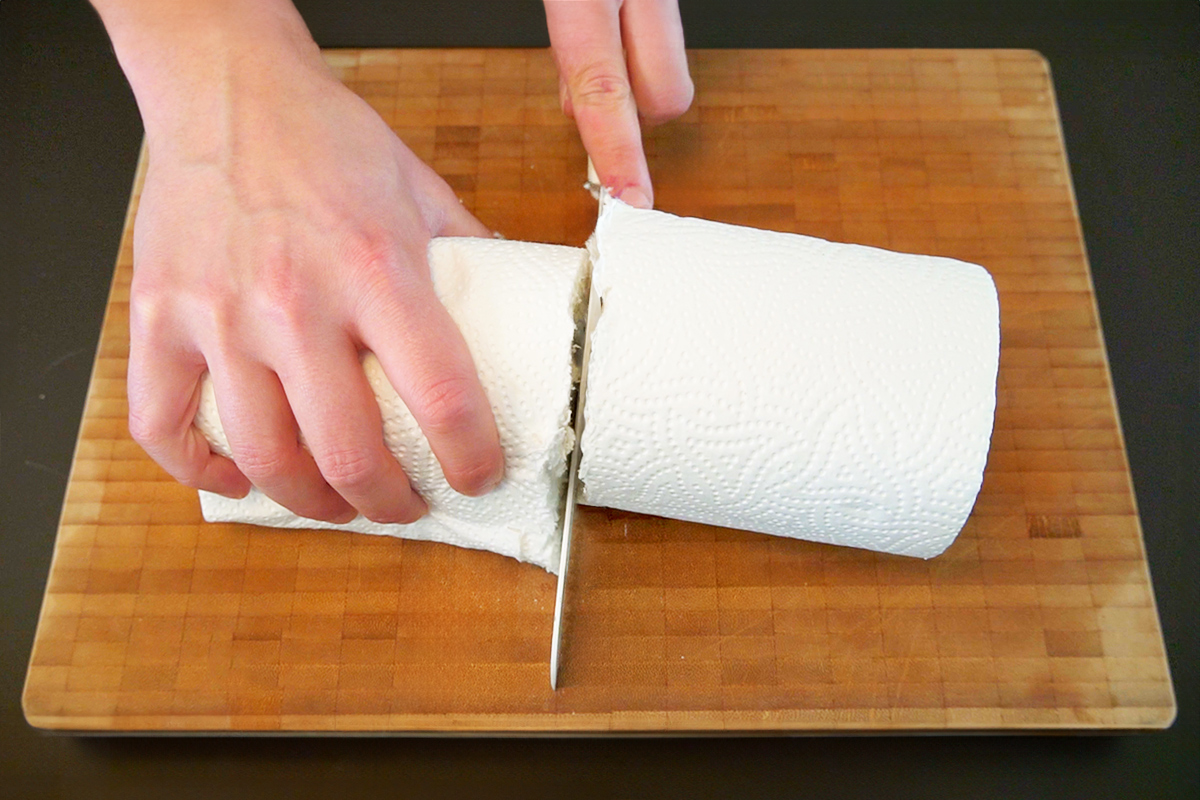








 Unique Beauty is free for all users.
Unique Beauty is free for all users.